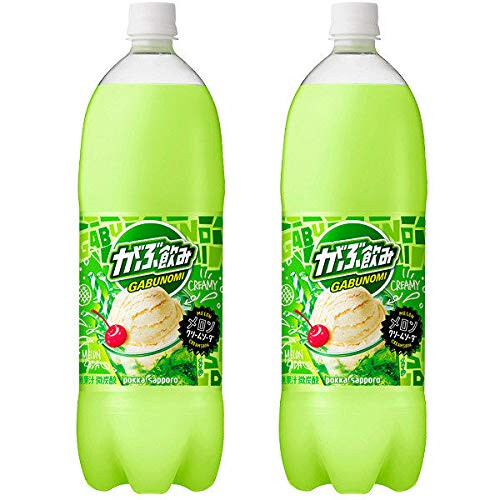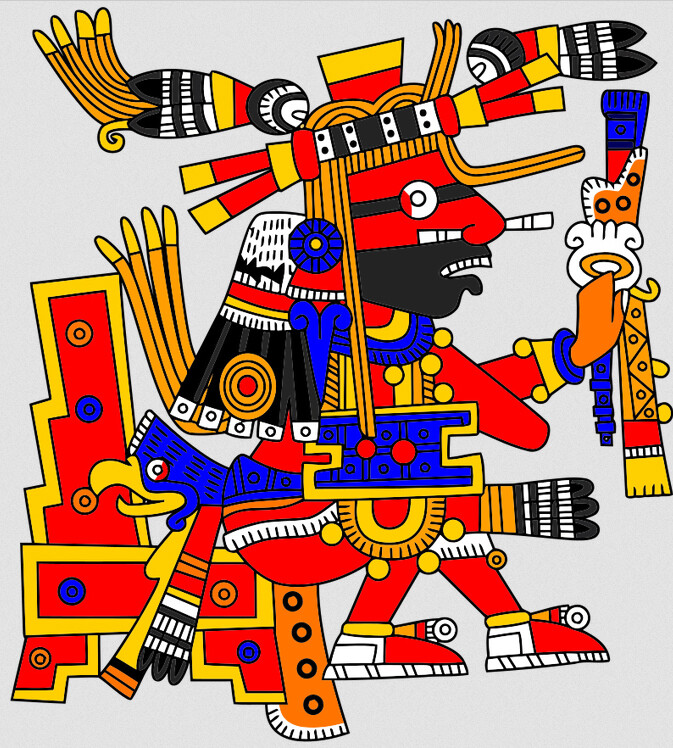Cracked's Eatin' Weird - 4 Crazy Cultural Food Trends

You wouldn't know it by their clothing, musical choices, mannerisms, or ideas, but most of the people you see every day are unique and different in their own ways. Luckily, food is one of those things that can instinctively and profoundly tell you something important about someone. Like being a cat-or-dog person, Hawaiian pizza preference is instantly polarizing.
This inherent personality in cuisine and culinary tradition is why Buzzfeed quizzes let you discover what type of pizza you are. Would you care what kind of brand of portable bidet you were? Didn't think so!
The Eastern Hemisphere Invented A Big Booty Sheepy Specifically For Ass-Fat
In the West, few mealtime misfortunes cause as much culture-specific disgust as biting into an oleaginous piece of fat. Especially when it coats the inside of your mouth, gradually releasing space-age bovine hormones and heavy metals into your blood as you try to nail a crucial job interview.
In households across the Occident, such gelatinous pieces of non-meat are rightfully tossed to the dog or the dad. But fat is just as prized as a nice slab of muscle in the parts of the world where "carbonated mint yogurt soda" is a sensible string of words:

Sadaf Foods
The East loves fat so much they developed a sheep of rap-vixen proportions. The selling point of fat-tailed sheep is, to quote a literary laureate of the dead past, "dumps like a truck, truck, truck."

Erector/Wikimedia Commons
About 25% of the world's sheep are of the fat-tailed variety. So while Europe and other electrified areas settle for thin-tailed types, the Eastern hemisphere has tens of breeds of big-rumped sheep with tails that can weigh more than 25 pounds. The Eastern hemisphere also has a crocodile god that eats your soul when you die, but that's neither here nor there.
The sheep are hardy specimens, able to withstand times of scarcity by metabolizing their fatty hindquarters. Speaking of which, don't let anyone body-shame you; you're bred for famine survival. Well done. On rare occasions, fat tails grow to incredible proportions:

Over the past millennia, these sheep have been immortalized in various art forms, including this mosaic, featured in a church near Antioch 1,600 years ago:

About 2,500 years ago, the historian Herodotus recorded facts and fancies and was humanity's first Encyclopedia Britannica, Daily Mail, and Wookieepedia all in one. He wrote about fat-tails with tails so fat their shepherds built carts for them, which is corroborated by other texts and this 17th-century art:

The fat tails may one day disappear like the dodo, but for opposite reasons. Many people are lately switching to supposedly heart-healthier oils, like the "extra virgin" varieties secretly diluted from dog-gland excretions.
The Sicilians Build Insane Art And Arches Out Of Bread Bread
Many places around the world have erected triumphal arches to celebrate the genocides they've done to other places. Very few have since sent apology postcards with a cute dog. But in the Sicilian commune of San Biagio Platani, arches made of bread, not marble, are erected every Easter to celebrate peace.


Each year a portion of the harvest is put aside for the "Archi di Pasqua," arches of Easter. The homeless and hungry be damned; feeding such personages only emboldens their stance. Plus, keeping the masses fed unfairly prolongs their wait for the greatest gift any among the faithful can receive: meeting Jesus.
The structural and decorative breads are made out of salted Play-Doh, basically. It requires hundreds of pounds of sugar and nearly 2,000 pounds of oranges to yield the more than 10,000 pounds of bread products that embellish the town's starchy archies.
Bread art evolved as a Sicilian version of duelin' banjos contested by two confraternities, or religious factions. Some confraternities were established to take money from the poor. Some were established to do weird sex stuff to the poor. Others wear cool robes and drink strong ale. The two in San Biagio Platani make neat bread.


One of them is devoted to the Holy Rosary and the Madonna, while the other prefers the Holy Sacrament and the Lord. So I invite you to view these with the wondrous, open-minded sentimentality you view the erotic-art competitions between fans of FF7 and FF8.
Dates, asparagus, beans, rice, pasta, herbs, and more than 160 ingredients are combined into structures that grow more complex every year. Much more sophisticated than the first bread arches, built in the 17th century to welcome visiting rulers—due to a lack of marble, this agriculturally minded town's triumphal erections were hewn of bread.

The takeaway here is that unlike other religious rival organizations worth their salt, these two confraternities did not slaughter each other under the banner of compassion and understanding. By failing to torture one another with red-hot metal rods, one wonders, do they even love God?
Don't they realize that the most pious of pilgrims commit atrocities to earn entrance into heaven's gates? How else could one gain possession of Saint Peter's Keys other than through kindly subjugation?
Japanese Folks Buy Incredibly Expensive Fruit As Gifts
If you gift someone fruit in America, you'll find that fruit's rotting corpse two weeks later behind a mangled box of Lucky Charms with an erroneously completed word jumble. Not so in Japan, where word jumbles are spot-on and fruit is a premier gift whose price has grown to match its luxurious aura. This is Japan's most revered fruit-seller, the legendary Sembikiya:


Throughout Japan, you can snag a divinely sweet apple or vibrant citrus for $20. A single sublime strawberry may go for $10. White strawberries called Shiroi Houseki, or White Jewel, are among the finest despite their supremacist-sounding name. They come from one farm and their father spent years cross-breeding them into existence, which I picture as him booping them and saying, "now kiss." It's a finicky process, and only 1 in 10 are perfectly white. Should you feel so inclined, you can order a similar variant online for $150:

It tastes tropical and imparts a "slight mysterious feeling" to the mouth. Now that you know, you can buy a 500,000-count pallet of white Airheads on Alibaba and pocket the $145 in change.
Movin' on up the scale, a single Taiyo no Tamago (egg of the Sun) mango costs $250. Grapes are even more prized, with Ruby Roman fetching up to $500 per bunch. Only 10% of Ruby Romans are Special Superior, and only one or two bunches per year meet the even-loftier Premium standards, with a $1,000 price tag. In 2019 and 2020, zero grapes qualified for Premium status.
Growing a single deluxe fruit item requires much work, as per the treasured paragon of all melons, the Yūbari King cantaloupe, which holds commander-in-chief powers in Japan. It's grown only in greenhouses in the volcanic, rain-drenched Yūbari soil, which must be of a certain pH, particularly loose, and nutrient-packed. Each melon takes 100 days to grow and is protected from sun exposure with a cute little hat:

The greenhouses automatically adjust soil and air humidity to match the melons' stages of maturation. The melons are also massaged for improved taste and appearance.
A market-ready individual must be perfectly round, fragrant, patterned like fine porcelain, properly stemmed, and appropriately sonorous when tapped, aka the grocery store dad test.
A pair of these melons sold for $46,000 at auction in 2019. Other fruits auctioned for many thousands but are no different than their several-hundred-dollar counterparts. The big prices offer a monetary incentive for fancy farmers and clout for the corporate buyer. Like Pokka Sapporo Food & Beverage Ltd, who dumped the 46 thou to celebrate their melon soda's 10th anniversary.

Pokka Sapporo Foods
Mexico And Europe Love Alternative "Caviars" From Water Flies And Snails
Mexico's culinary traditions bridge the proud past and the uncertain future. One certainty is that we'll need more sustainable sources of protein; the way we're downing these new Bacon Whopper Melts, it's clear that cows, pigs, and other sizable landbeasts aren't lasting much longer.
Why not insects indeed. Mexico is considered, at least by some number of people, the bug eating-est nation. Mexico’s traditional culinary arsenal includes 500 insects, of the 2,000ish edible types scientists categorized before saying screw this on hopping on that Halo multi, son!
The historic "ahuautle" is translated somewhat variably based on the Latinity of the source, though the BBC's "seeds of joy" is nice. "Water balls" is descriptive enough and "eggs from a fly's asshole" is truest still but sounds least appetizing.
This "Aztec caviar" boasts a royally sacred history. It was favored by rulers like Montezuma, who consumed this "food of the goods" every morning.

Marco Ortiz-MOF/Shutterstock
Monty's father, the sixth emperor of Tenochtitlán, was named after the water fly: Axayácatl. Even wasps were considered holy, something feasible only in a warrior culture.
You probably know the Aztecs murdered POWs atop their grand blood-pyramids to appease divine beings, including a lightning-snake-thunder-bird-god that made it rain corn, I think. Lesser known is the fire god Xiuhtecuhtli, who demanded special supplication: a victim's empty chest cavity would be coated with water fly eggs to appease the X-man, who absolutely 100% was an extraterrestrial ancient astronaut visitor according to the following image:

Thousands of miles away, an equally odd alt-caviar is consumed: snail eggs, harvested through snail farming or, for your word of the day, heliciculture. Now here’s the thing: snails are hermaphrodites. Both the males and females lay white translucent eggs in the dirt, which is also the preferred reproduction method for propagandist news anchors.

The Imperia Caviar blog assures us, bright-eyed consumers, that snail caviar is "among the most sought-after ingredients on the planet." But it's no niobium, as you can buy it on Amazon, where, appropriately, it has zero reviews and no customer questions.
It is especially—and please note that here "especially" means "only"—popular in France, Poland, Italy, and maybe one other country that enjoys trilling in its music videos.
Snail caviar is potentially more expensive than the aquatic stuff, since production is limited to the underwhelming amount of eggs that each snail produces, about 50-100 per year. The best of which are meticulously selected via tweezers over the course of 150 days.

Koss13/Shutterstock
This is why a 3-gram package costs $140. The flavor is mossy and earthy, so if you taste the sea, you've been ripped off and received real caviar.
Top image: Mercury Studio






